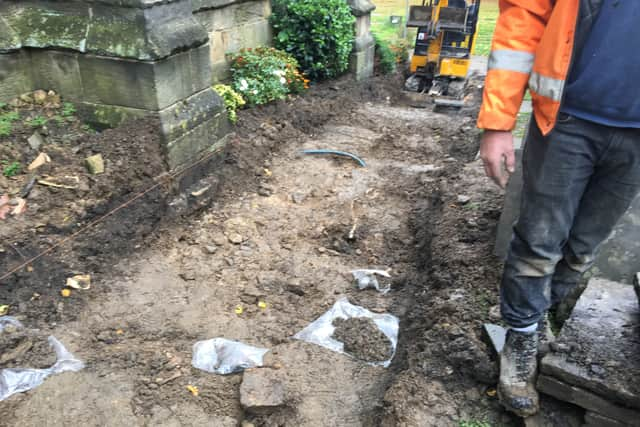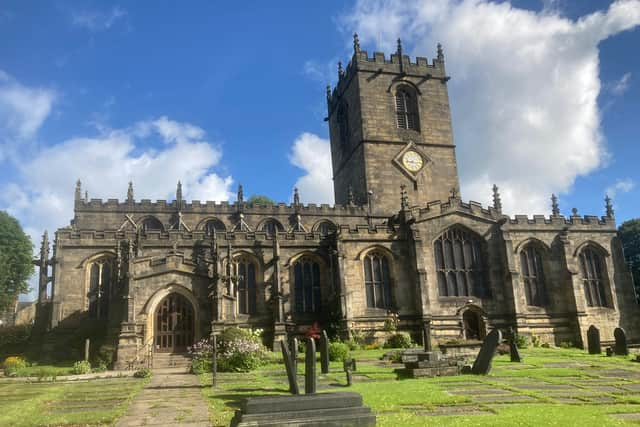St Mary's Church Ecclesfield: Skeletons discovered during work at Sheffield church to be reinterred
and live on Freeview channel 276
The fragments of seven wayward skeletons have been discovered during a revamp to install disabled access at a Sheffield church.
Crews working on a facelift at St Mary’s Church in Ecclesfield unexpectedly unearthed unearthed several sets of post-Medieval bones.
Advertisement
Hide AdAdvertisement
Hide Ad

The discovery was made during improvements to disabled access in the churchyard, leading to the skeletons being disinterred.
As a Grade 1 listed church on an ancient site, an archaeologist must be employed whenever work is done, meaning once the discovery was made the bones were examined by the Archaeology Department at the University of Sheffield before being returned to St Mary’s.
Now, plans are underway to respectfully lay them to rest once again at the church - using researched burial rites from 1662.


Revd Tim Gill, Vicar at St Mary’s Ecclesfield, said: "First and foremost, we remember these are human remains that need to be treated not as a spectacle. They need to be buried decently and prayerfully. When they're reinterred, they'll be given full Christian burial rites. It would be very easy to turn it into some sort of circus, but it isn't that at all.
Advertisement
Hide AdAdvertisement
Hide Ad"Of course, there is interest because the discovery itself is unusual. In fact, I couldn't find anyone who had ever done this before. The archaeologist told me that, given the bodies were buried very close to the church, they were probably significant people. They may be people who had some sort of significance in terms of their faith.
“In the research I did, I discovered that we are supposed to bury them with a service as close as possible to the service that would have been for the original funeral. I'll be using the 1662 burial rite in full.”
Alongside the fragments of seven skeletons other structures were found, including stones forming the shaft of an external standing stone cross, with archaeologists believing the shaft itself pre-dates the Anglo-Saxon period.
The bones will be re-interred at a special service on Wednesday, March 20, at 11.30am, with a Book of Common Prayer burial in the churchyard near to where they were found.
Comment Guidelines
National World encourages reader discussion on our stories. User feedback, insights and back-and-forth exchanges add a rich layer of context to reporting. Please review our Community Guidelines before commenting.
